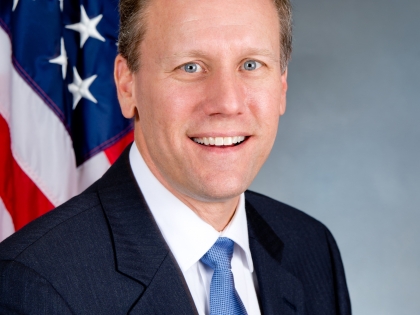
Cooperation Key To Environmental Progress

In the news it is all too common to read about government programs that go wrong and exacerbate the problems they were designed to fix. Fortunately that is not always the case. As an example, I am pleased to share my experience on a tour of a dairy farm in southern Onondaga County.
I recently had the pleasure of visiting Fesko Farm in the town of Spafford on a hillside overlooking Skaneateles Lake.
The Feskos have converted their fields to what is known as "strip farming" along the hillsides that overlook Skaneateles Lake. Using this technique, fields of corn are broken up into strips along the slope. Between the strips of crops are stretches of grass that keep the topsoil from being lost.
In other fields, the Feskos use grasses as borders to keep the topsoil from being lost in drainage ditches.
There is also great care taken to direct runoff around the farm. Through expert planning and careful management, rain water that runs over fertilized areas is directed so it won’t contaminate Skaneateles Lake. Clean water is directed quickly to streams before it can be contaminated.
The barns where the cows are kept are also designed to contain and control runoff.
The result of all this planning and design has been dramatically lower contamination of the Skaneateles Lake watershed, greater topsoil retention and healthier livestock.
The Feskos are to be commended for their stewardship of the land. Their environmental efforts have resulted in healthier cattle and higher quality milk. The efforts to control runoff have helped to protect a sensitive watershed.
However, this level of environmental planning is not cheap. Detailed land use plans and environmentally sound barns cost thousands of dollars.
As is so often the case, success is a matter of teamwork. The Onondaga County Soil and Water Conservation District has been working with the Feskos to develop this strategy, and has provided funds to have it implemented.
Beyond the successful results, the partnership between Fesko Farm and the Onondaga County Soil and Water Conservation District demonstrates a great model for action. Local officials worked with the property owner to make the reforms that were necessary. Public money was used to make sure that regulations did not become an undo burden on the farmer. And in the end, the interest of environmentalists and farmers came together.
As ranking Democrat on both the Senate Agriculture Committee and the Environmental Conservation Committee it is my hope that constructive partnerships like this can flourish throughout the state.

